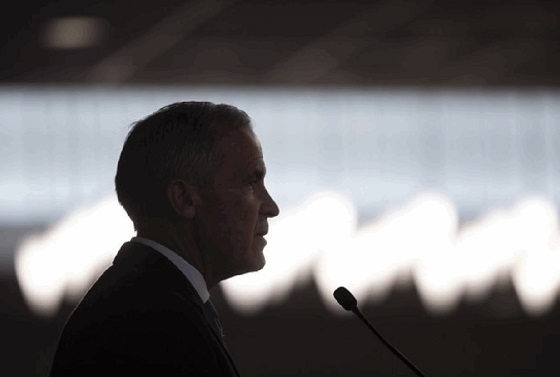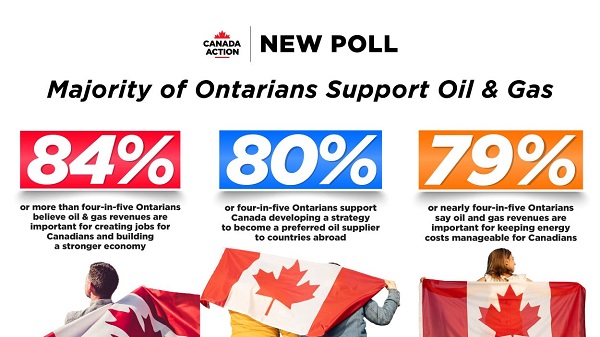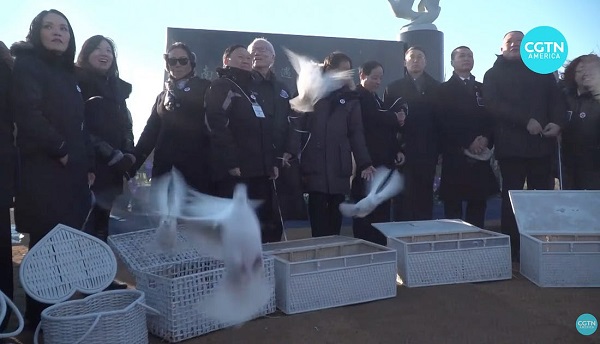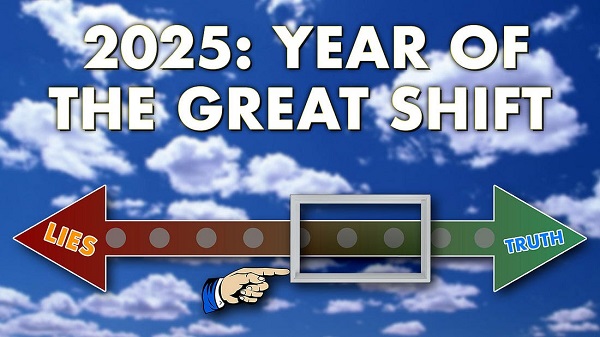Great Reset
Hundreds of thousands of migrants are being held in southern Mexico until US Election Day

From The Center for Immigration Studies
By Todd Bensman
TAPACHULA, Mexico — This town near the border of Guatemala holds a migrant time bomb ready to go off just after the US presidential election.
The fuse was lit in December 2023, when the Joe Biden-Kamala Harris administration sent senior lieutenants to Mexico to work out the details of what remains a highly mysterious grand diplomatic bargain.
Worried about what the optics of the southern border would do to their re-election chances — though not the migrant crisis itself — the White House wanted to stop the pictures of crowds of people gathered at the wall.
The deal was to have Mexico deploy 32,500 troops to the US border to round up untold thousands of intending border crossers from the northern precincts and force-ship them — “internal deportation” by planes and buses — thousands of miles to Mexico’s southern provinces and entrap them in cities like Tapachula in Chiapas state behind militarized roadblocks.
Mexico closed off most of its freight trains to migrant free riders, bulldozed northern camps, and patrolled relentlessly for more deportee targets.
Meanwhile, the administration increased “parole” programs that flew migrants directly from countries like Venezuela, thus avoiding the border entirely.
The effect was immediate. Illegal border crossings plummeted from an embarrassing, record-breaking 12,000 to 14,000 per day in November and December 2023 to about 3,000 or 4,000 per day before January was even over.
But the crisis isn’t over.
The just-released 2025 Homeland Threat Assessment from the Department of Homeland Security says the decrease in illegal border crossing is largely due to “increased Mexican enforcement efforts.”
What happens if that enforcement stops?
Tapachula is bursting at the seams.
No one really knows how many people are stacked up, but local shelter managers reported to me that they had filled up long ago.
The publisher of Noticia De Tapachula, the daily newspaper, told me 150,000 immigrants were in town at any given time, a 42% increase in the city’s normal population of 350,000. Untold thousands more are stacked up in Villahermosa, a city of 830,000.
Mexico’s response has been to try to spread the immigrants around the southern portion of the country.
I spent time at two different roadside areas where federal immigration officers would call out names from the crowd, who would board buses that delivered them to other regional cities in Chiapas — but NOT beyond them and certainly never beyond Mexico City.
Mexico is still trying to hold up its end of the bargain, at least until November 5, even though more migrants are starting to slip through and making it over the Texas or California borders.
The question is what happens after the American election.
No matter who wins, Mexico might well consider that it more than satisfied its obligation to the current White House occupant and open the floodgates.
If it’s Donald Trump, Americans should expect a massive tidal wave of caravans for the 10 weeks before Inauguration Day. All the migrants I’ve spoken to say they fear a Trump presidency, and will rush to the border in a last-ditch attempt.
If it’s Harris, perhaps the massive tidal wave will go on for the next four years, much like the last four.
Todd Bensman, a senior national security fellow at the Center for Immigration Studies, is the author of “Overrun: How Joe Biden Unleashed the Greatest Border Crisis in U.S. History.”
Digital ID
Canadian government launches trial version of digital ID for certain licenses, permits

From LifeSiteNews
The Employment and Social Development Canada (ESDC) department has officially confirmed it is developing a digital ID for certain licenses and permits.
The Employment and Social Development Canada (ESDC) department has officially confirmed it is developing a digital ID for certain licenses and permits, called “GC Issue and Verify,” which has already been listed on the Google Play store, as a trial-only app for certain users.
The digital ID claims the government can replace and be full “digital versions” of the “physical credentials they already provide today, like work permits and boating licenses.”
“Instead of only having physical credentials in their wallets, people will also be able to securely store their digital credentials on their mobile devices,” says the government.
According to ESDC officials, the digital IDs can be shared online or in-person “when needed, making it easy for departments, organizations, and businesses to validate their information.”
The government argued that since many Canadians already use “digital credentials without realizing it,” such as a digital ticket “stored on our mobile device instead of using a printed ticket,” this would be the same for IDs such as licenses.
ESDC said that “digital options” will be voluntary and that people can still use “traditional physical methods of verification,” instead.
READ: Canada releases new digital ID app for personal documents despite privacy concerns
The reality is that digital IDs and similar systems have long been pushed by globalist groups like the World Economic Forum, an organization with which Canadian Prime Minister Mark Carney has extensive ties, under the guise of ease of access and security.
Also, Canadians do not want digital IDs, as noted by Canada’s Privy Council research from 2023, which said there is strong public resistance to the use of digital IDs to access government services.
GC Issue and Verify is one of two digital ID projects on the go. As reported by LifeSiteNews, the Liberal government under Carney recently quietly released a new type of digital ID app on Google’s Play Store called GC Wallet.
Both GC Wallet and GC Issue and Verify are now being tested with federal partners, those being Transport Canada and Immigration, Refugees and Citizenship Canada.
During COVID, the Canadian federal government released a digital-type app called ArriveCAN app for travel that was a form of digital ID. The app was riddled with technical glitches along with privacy concerns from users.
As reported by LifeSiteNews, the Canadian government hired outside consultants tasked with looking into whether or not officials should proceed with creating a digital ID system for all citizens and residents.
Opp0sition MP Leslyn Lewis, recently warned Canadians to be “on guard” against a push by the ruling Liberal Party to bring forth digital IDs, saying they should be voluntary.
Censorship Industrial Complex
Canadian university censors free speech advocate who spoke out against Indigenous ‘mass grave’ hoax

From LifeSiteNews
Dr. Frances Widdowson was arrested and given a ticket at the University of Victoria campus after trying to engage in conversation about ‘the disputed claims of unmarked graves in Kamloops.’
A Canadian academic who spoke out against claims there are mass unmarked graves of kids on former Indigenous residential schools, and who was arrested on a university campus as a result for trespassing, is fighting back with the help of a top constitutional group.
Dr. Frances Widdowson was arrested and given a ticket on December 2, 2025, at the University of Victoria (UVic) campus after trying to engage in conversation about “the disputed claims of unmarked graves in Kamloops,” noted the Justice Centre for Constitutional Freedoms (JCCF) in a recent news release.
According to the JCCF, Widdowson was trying to initiate a “good faith” conversation with people on campus, along with the leader of OneBC provincial party, Dallas Brodi.
“My arrest at the University of Victoria is an indication of an institution that is completely unmoored from its academic purpose,” said Widdowson in a statement made available to LifeSiteNews.
She added that the “institution” has been “perpetuating the falsehood” of the remains of 215 children “being confirmed at Kamloops since 2021, and is intent on censoring any correction of this claim.”
“This should be of concern for everyone who believes that universities should be places of open inquiry and critical thinking, not propaganda and indoctrination,” she added.
UVic had the day before Widdowson’s arrest warned on its website that those in favor of free speech were “not permitted to attend UVic property for the purpose of speaking publicly.”
Despite the warning, Widdowson, when she came to campus, was met with some “100 aggressive protesters assembled where she intended to speak at Petch Fountain,” noted the JCCF.
The protesters consisted of self-identified Communists, along with Antifa-aligned people and Hamas supporters.
When Widdowson was confronted by university security, along with local police, she was served with a trespass notice.
“When she declined to leave, she was arrested, detained for about two hours, and charged under British Columbia’s Trespass Act—an offence punishable by fines up to $2,000 or up to six months’ imprisonment,” said the JCCF.
According to Constitutional lawyer Glenn Blackett, UVic actions are shameful, as it “receives hundreds of millions of taxpayer dollars annually while it facilitates the arrest of Canadians attempting to engage in free inquiry on campus.”
Widdowson’s legal team, with the help of the JCCF, will be defending her ticket to protect her “Charter-protected freedoms of expression and peaceful assembly.”
Widdowson served as a tenured professor at Mount Royal University in Calgary, Alberta, before she was fired over criticism of her views on identity politics and Indigenous policy, notes the JCCF. She was vindicated, however, as an arbitrator later found her termination was wrongful.
In 2021 and 2022, the mainstream media ran with inflammatory and dubious claims that hundreds of children were buried and disregarded by Catholic priests and nuns who ran some Canadian residential schools. The reality is, after four years, there have been no mass graves discovered at residential schools.
However, as the claims went unfounded, over 120 churches, most of them Catholic and many of them on Indigenous lands that serve the local population, have been burned to the ground, vandalized, or defiled in Canada since the spring of 2021.
Last year, retired Manitoba judge Brian Giesbrecht said Canadians are being “deliberately deceived by their own government” after blasting the former Trudeau government for “actively pursuing” a policy that blames the Catholic Church for the unfounded “deaths and secret burials” of Indigenous children.
As reported by LifeSiteNews, new private members’ Bill C-254, “An Act To Amend The Criminal Code” introduced by New Democrat MP Leah Gazan, looks to give jail time to people who engage in so-called “Denialism.” The bill would look to jail those who question the media and government narrative surrounding Canada’s “Indian Residential School system” that there are mass graves despite no evidence to support this claim.
-

 armed forces2 days ago
armed forces2 days agoRemembering Afghanistan and the sacrifices of our military families
-

 Fraser Institute2 days ago
Fraser Institute2 days agoHow to talk about housing at the holiday dinner table
-

 Frontier Centre for Public Policy2 days ago
Frontier Centre for Public Policy2 days agoTent Cities Were Rare Five Years Ago. Now They’re Everywhere
-

 Opinion2 days ago
Opinion2 days agoPope Leo XIV’s Christmas night homily
-

 Fraser Institute23 hours ago
Fraser Institute23 hours agoCarney government sowing seeds for corruption in Ottawa
-

 Alberta23 hours ago
Alberta23 hours agoAlberta Next Panel calls for less Ottawa—and it could pay off
-

 Energy14 hours ago
Energy14 hours agoNew Poll Shows Ontarians See Oil & Gas as Key to Jobs, Economy, and Trade
-

 Business10 hours ago
Business10 hours agoSocialism vs. Capitalism









